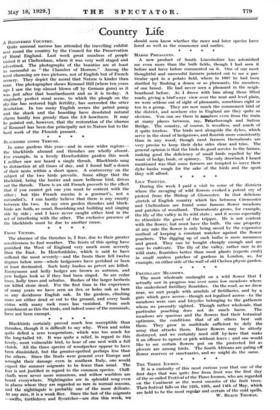MARSH PHEASANTS.
A new product of South Lincolnshire has astonished me even more than the bulb fields, though I had seen it before and have before commented on it. One of our most thoughtful and successful farmers pointed out to me a par- ticular spot in a potato field, where in 1907 he had been startled by flushing a dozen or so pheasants, the members of one brood. He had never seen a pheasant in the neigh- bourhood before. As I drove with him along those lifted roads, giving a bird's-eye view over the neat and level plain, we were seldom out of sight of pheasants, sometimes eight or ten in a group. They are now much the commonest bird of the district, and nowhere else in England are they quite so obvious. -You can see them in numbers even from the train at many places between, say. Peterborough and Sutton Bridge. The country, of course, is woodless, and much of it quite treeless. The birds nest alongside the dykes, which serve in the stead of hedgerows, and flourish more consistently than in any ,wood, though most farmers thereabouts are very precise to keep their dyke sides clear and trim. The general opinion is that the birds do good service to the farmer, making good the deficiency of small birds repelled by the want of hedge, bush, or spinney. The only drawback I heard mentioned was that some farmers are tempted to leave their dyke banks rough for the sake of the birds and the sport they will afford.












































 Previous page
Previous page